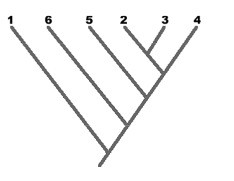Analysis of a bacterial gene indicates that 24% of the nucleotides in the coding strand contain the base A, 18% contain the base T, 26% contain the base G, and 32% contain the base C. What percent of the nucleotides in the mRNA transcribed from this gene will contain the base U? (Enter your answer as a number only without the percent sign, e.g. enter 5 not5%.)
What will be an ideal response?
Clarify Question
· What is the key concept addressed by the question?
· What type of thinking is required?
· What key words does the question contain and what do they mean?
Gather Content
· What do you already know about DNA and RNA?
Consider Possibilities
· What other information is related to the question? Which information is most useful?
Choose Answer
· Given what you now know, what information and/or problem solving approach is most likely to produce the correct answer?
Reflect on Process
· Did your problem-solving process lead you to the correct answer? If not, where did the process break down or lead you astray? How can you revise your approach to produce a more desirable result?
18
Clarify Question
· What is the key concept addressed by the question?
o This question addresses DNA and RNA.
· What type of thinking is required?
o This question is asking you to analyze the information given, using logic, to dissect the problem and determine the answer.
· What key words does the question contain and what do they mean?
o The coding strand is the strand of a gene that matches the resulting mRNA which is transcribed directly off of the template strand.
Gather Content
· What do you already know about DNA and RNA?
o DNA uses the bases A, T, C, and G. RNA uses A, U, C, and G.
o mRNA is transcribed directly off of the template strand. This results in an mRNA that matches the sequence of the coding strand – except that T is replaced with U.
Consider Possibilities
· What other information is related to the question? Which information is most useful?
o Since the mRNA matches the coding strand, we can expect the same percentages in the mRNA.
Choose Answer
· Given what you now know, what information and/or problem solving approach is most likely to produce the correct answer?
o In the coding strand, there is 18% T. The mRNA will be similar, but use U instead of T.
o Therefore the mRNA will have 18% U.
Reflect on Process
· Did your problem-solving process lead you to the correct answer? If not, where did the process break down or lead you astray? How can you revise your approach to produce a more desirable result?
o This question asked you to determine the % of U in an mRNA based on the coding strand of the gene.
o The question required you to analyze the information given, using logic, to dissect the problem and determine the answer.
o Did you recognize that the mRNA will match the coding strand’s sequence?
o Did you remember that U replaces T in RNA?
You might also like to view...
Asexual reproduction occurs in:
A. unicellular eukaryotes. B. skin cells. C. plant dermal cells. D. All of the above are correct.
What carries a signal from one neuron to the next?
A) Neurotransmitter B) Myelin C) Synapse D) Dendrite
________ are disease-causing organisms that invade a person's body
Fill in the blank(s) with correct word
 Consider the cladogram shown. If we designate species 1 as the outgroup, which species has the greatest number of ancestral character states (plesiomorphies)?
Consider the cladogram shown. If we designate species 1 as the outgroup, which species has the greatest number of ancestral character states (plesiomorphies)?
A. 2 B. 3 C. 4 D. 5 E. 6